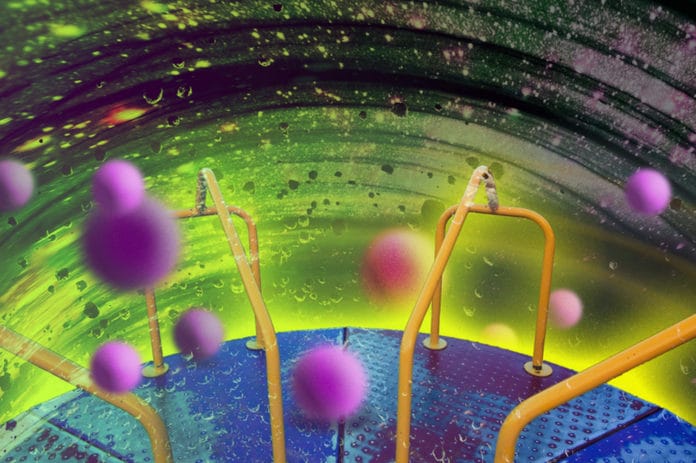Ultralight bosons are theoretical particles that have a mass of less than a billionth of the mass of an electron. As they rarely interact with their surroundings, they thus have far eluded searches to confirm their existence.
If they are present, then the ultralight boson, such as axions, will form dark matter.
In 2019, it was suggested that ultralight bosons could be spotted lurking near supermassive black holes. According to the study, clouds of them will form outside the event horizon of spinning supermassive black holes, which reside at many galaxies’ centers.
Now, physicists at MIT‘s LIGO Laboratory have explored ultralight bosons using black holes.
Physicists have discovered two previously detected, fast-spinning black holes to have been affected by any ultralight bosons. Their large spins rule out the existence of ultralight bosons with masses between 1.3×10-13 electronvolts and 2.7×10-13 electronvolts — around a quintillionth of the mass of an electron.
This is the first study to use the spins of black holes detected by LIGO and Virgo and gravitational-wave data to study dark matter.
Co-author Salvatore Vitale, assistant professor of physics at MIT, said, “There are different types of bosons, and we have probed one. There may be others, and we can apply this analysis to the growing dataset that LIGO and Virgo will provide over the next few years.”
Quantum theory posits that boson particles interact with a black hole under the right circumstances at a very small scale. This scale, known as the Compton wavelength, is inversely proportional to the particle mass.
Due to their extreme light-weight, these particles have an exceptionally large wavelength. For a specific mass range of bosons, their wavelength can be comparable to the size of a black hole. In such cases, superradiance is expected to develop quickly.
As a result, ultralight bosons are created from the vacuum around a black hole in large quantities. The tiny particles collectively drag on the black hole and slow down its spin due to the large amount.
Scientists believe this boson slow-down can occur over several thousand years — relatively quickly on astrophysical timescales.
In this study, scientists observed all 45 black hole binaries reported by LIGO and Virgo to date. The masses of these black holes indicate that if they had interacted with ultralight bosons, the particles would have been between 1×10-13 electronvolts and 2×10-11 electronvolts in mass.
For every black hole, the group determined the spin that it ought to have if ultralight bosons inside the mass range spun down the black hole. From their examination, two black holes were selected: GW190412 and GW190517. Just as there is a maximum velocity for physical objects — the speed of light — a topspin at which black holes can rotate. GW190517 is spinning at close to that maximum. The scientists calculated that if ultralight bosons existed, they would have dragged its spin down by a factor of two.
Other possible scenarios were also considered while generating the black holes’ large spins.
For example, a black hole might have been spun down by bosons yet then hence accelerated again through interactions with the encompassing accretion disk — a disk of matter from which the black hole could suck up energy and momentum.
Lead author Kwan Yeung (Ken) Ng said, “If you do the math, you find it takes too long to spin up a black hole to the level that we see here. So, we can safely ignore this spin-up effect.”
In other words, it’s unlikely that the black holes’ high spins are due to an alternate scenario in which ultralight bosons also exist. Given the masses and high spins of both black holes, we could rule out ultralight bosons’ existence with groups between 1.3×10-13 electronvolts and 2.7×10-13 electronvolts.
Co-author Vitale, said, “We’ve excluded some bosons in this mass range. This work also shows how gravitational-wave detections can contribute to searches for elementary particles.”
Journal Reference:
- Ken K. Y. Ng et al. Searching for ultralight bosons within spin measurements of a population of binary black hole mergers. DOI: 10.1103/PhysRevD.103.063010
